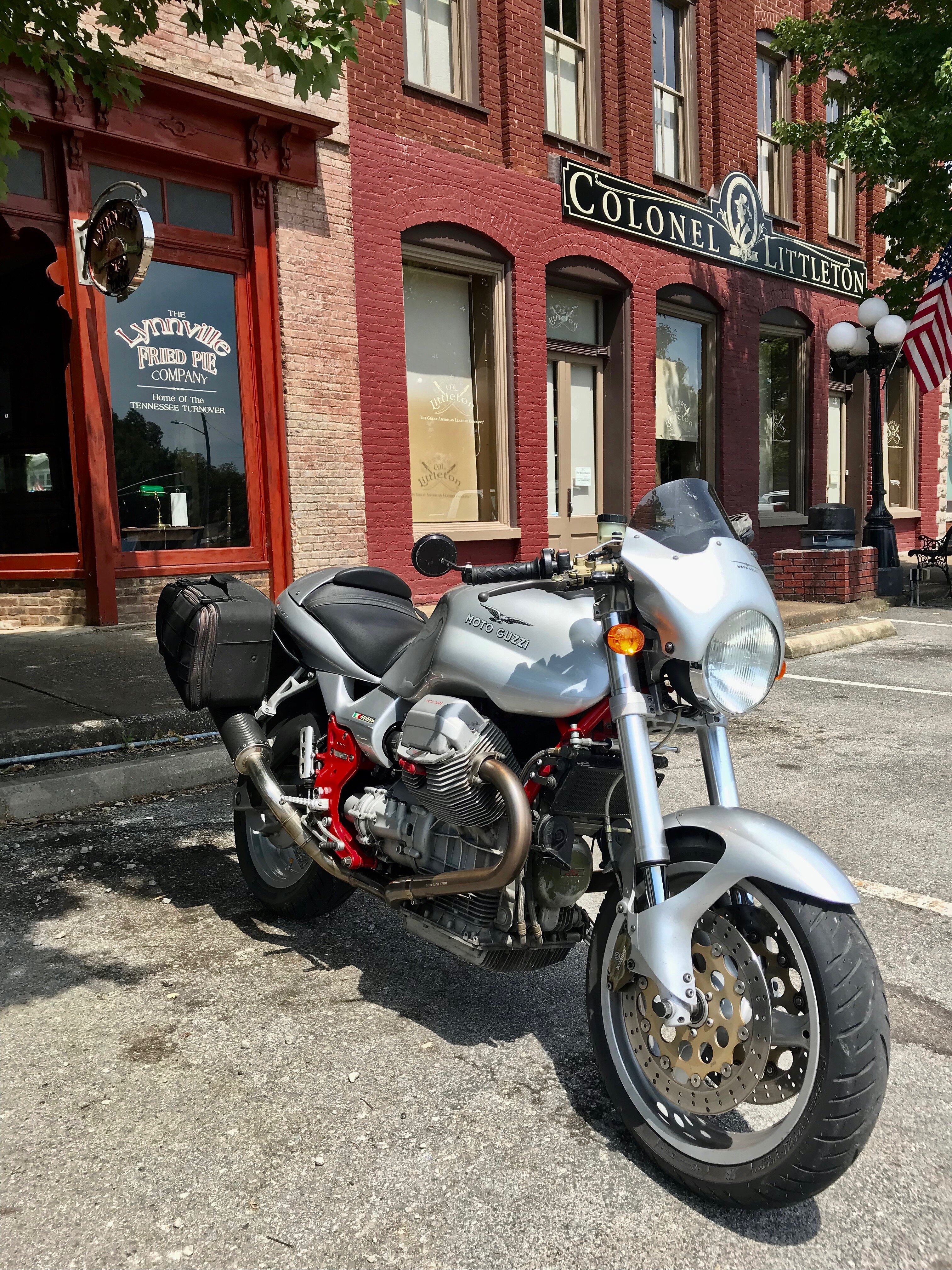-
Posts
19,905 -
Joined
-
Last visited
-
Days Won
1,130
Content Type
Profiles
Forums
Events
Gallery
Community Map
Everything posted by docc
-

Indian FTR Sport / Moto Guzzi V11 Sport
docc replied to Joe's topic in Special place for banter and conversation
Curious about the fuel tank/ range. When looking at these when they first came out, it impressed me as more of an "around town bike." -
The coil wattage/power on these "Relays of Interest" has ranged from 1.2W to 1.5 to 1.8 (that highest on the NLA OMRON G8HE unicorn relays). Is the difference negligible in our practical application? Unknown. Someone knowledgeable suggested that the higher the coil power, the more tightly the N.O. contact is held (I paraphrase) for a potentially higher amperage contact rating and less chance of "bounce." Given the option, I would choose a higher coil power. That said, I am running a couple 1.2W CIT in the least critical positions (#3/Neutral and #4/ECU). The details and minutiae of this discussion fascinates maybe two or three of us. The rest just want to know what one relay to plug into all five positions and forget about them. Worry more about beer.
-

ANSWERED V11 for sale online/ Craigslist and all others
docc replied to chamberlin's topic in 24/7 V11
Nice! Would love to see an image under that seat . . . -
Here, too:
-
The matter of failure due to "stacked tolerances?" Quite valid, in this case, I would venture. Again, my only failed relays came from a combination of a dodgy regulator with stator (alternator) failure. Would lesser relays have failed sooner or more dramatically? Perhaps. Can we conclude, based on most recent investigation and input, that both of these relay data sheets support their claimed ratings for our purposes? https://pickercomponents.com/pdf/Relays/PC782.pdf (Picker Components 30A/25A) https://www.onlinecomponents.com/en/datasheet/a11csq12vdc15r-51176058/ (CIT Relay 30A/20A)
-
The fact that micro relays have been reported to fail in Position #5, and that the operating temperature can be significantly lowered with a better quality/higher rated relay motivated many of us to install those relays, at least in the most demanding position on the V11 (Fuel/Ignition, #5). The idea that any old relay is "good enough" has seen many a V11 suffer electrical, starting, and running issues. Along with marginal ("good enough") battery condition and a collection of equally marginal connections, the issues can be rather maddening.
-
Ah, there you go. Two "gaskets" then and you're after #23. #23 = GU90706116 O-ring Check the usual US sources: MG Cycle, Hapermoto, AF1Racing, Cadre Cycle. If you take the part off, your local auto parts store "might" be able to suss out the fitment.
-
Parts Catalog, Engine, Code 34.28, Fuel supply, Page 56 / 83 #21 - GU90714103 Gasket
-
Ok, yes, your battery orientation and all of that ancillary wiring/cabling is non-standard. Routing a main positive pinched between a Negative Junction and the grounded ECU case seems worth investigating . . . This is the original battery orientation, OEM-style Odyssey PC545, but with changes to the wiring by adding "junction blocks" for the numerous ring terminals:
-
Thanks to @MartyNZ for also taking these temperature readings:
-
I'll have to read that last post more thoroughly, but let's accept that "nominal" "operating" voltage of a DC vehicle is not "12V." It really is more like the stated 14V, running while charging. For our V11: 13.8 - 14.2 VDC. Most valid mathematical calculations are probably best derived from 14VDC. Regarding hot relays? That may be the most reliable indicator of relay "quality" for a particular application. A particular V11 really gets "hot?" Time to replace it or install a higher rated relay in that position.
-
+1. The big [+] cable that crosses the image from bottom right to the upper left does not actually connect to the junction bolt at the the upper-left bolt junction (in the image), but passes between that (apparent) Grounding Junction against the corner of the ECU? What is that positive cable even for? This would make me unhappy . . .
-

2004 cafe sport model …. Question ( please forgive me lol )
docc replied to arveno's topic in Technical Topics
Full disclosure: Besides my hi-mile Sport, a Café Sport is the only other V11 I have actually ridden. I did, once, ride an 1100 Sport-i. You would think those would all be very similar. "Similar", I suppose, but very distinctly different . . . Quite obviously, I stuck with my RedFrame. -

2004 cafe sport model …. Question ( please forgive me lol )
docc replied to arveno's topic in Technical Topics
The only single plate clutches/ aluminum flywheels are the 2001 Rosso Mandello, and 2002 Scura and Tenni. The Café Sport is a Coppa Italia in a grey flannel suit with a black Fedora . . . -
How shall we apply this knowledge to this particular datasheet for the Picker Components relay? . . . CONTACT RATING: 1C | 30A @ 14VDC, resistive | 25A @ 14VDC, resistive CONTACT DATA: Maximum Continuous Current | 35A * https://pickercomponents.com/pdf/Relays/PC782.pdf [* Probably the Form 1A SPST specification.]
-
Can we conclude that, for these relay contact ratings: Carry = Continuous = Resistive = Resistance Load ? And that this is the condition we are primarily concerned with with the V11 in operational mode?
-
My impression is that 85ºC is a standard rating temperature, something approaching maximum operating temperature. At "room" temperature or common ambient temps, the relay could likely be rated much, much higher. But then fail at operating temperature. We have seen some very hot readings from under-rated relays in position #5. Also, it has been noted that the higher maximum operating temperature of a given relay "may" represent a higher quality relay. What I would like to see reconciled is the various amperage ratings we are seeing on datasheets that sometimes specify "nominal", "resistive/resistance", "switching", "inrush", "continuous", "carry" . . . Presently, I now have doubts that the Picker and the CIT (same company, as @al_roethlisberger noted) are actually capable of sustaining a continuous amperage over their contacts at the rating they are publishing.
-
> From DigiKey, regarding Switching versus Carrying current: • Maximum Switching CurrentThe maximum current which can safely beswitched by the contacts. AC and DCcurrent maximums may differ.• Maximum Carrying CurrentThe maximum current which after closingor prior to opening, the contacts cansafely pass without being subject totemperature rise in excess of their designlimit, or the design limit of othertemperature sensitive components in therelay (coil, springs, insulation, etc.). Thisvalue is usually in excess of the maximumswitching current. >From Pickering, regarding current (amperage): Switch Current When a relay is hot switched, the switch current is the maximum current that the relay can sustain when being opened or closed and not sustain contact damage. Carry Current If a relay's contacts are already closed, the relay may be able to sustain a higher current than the switch current. This is called the carry current. The carry current is normally limited by contact resistance, which causes the contacts to heat up. When a relay is carrying a current greater than the switch current, the relay must not be opened until the current is reduced.
-
It would be helpful if the datasheet language and ratings were standardized between manufacturers, but they are obviously not. I remember learning the distinction between the higher "inrush current" rating and the more desirable "continuous current" rating. This helped explain why some seemingly high rated relays were really just typical 10/20 rated Micro-ISO.
-
The Panasonic datasheet is a good comparison. Notice the phrase that accompanies the temperature specification, "maximum carrying current . . . continuous." Are we being deceived by looking at "resistive load" or "switching current" and these phrases are actually the ratings for inrush current and can vastly overstate the contacts' continuous current ratings? @Kiwi_Roy questions . . .
-
Yes. The "switching current" is the continuous load rating. if I understand the ratings correctly. In that case, these relays are actually only rated 10 amps N.C. and 20 amps N.O. That certainly would not qualify as "High Current" relays. gain, the datasheets are not standardized and can be nearly impossible to compare . . .
-
Re: Relays - Isn't the "Contact Rating" of 35/20 for the inrush current and the "Switching Current" the continuous load rating? In that case, you have relays rated 20/10. Re: Fuses - the #8 fuse was used on the early V11 for the Electric Fuel Tap, unused position with Manual Fuel Tap V11. Take a close look at your #3 green 30 amp fuse. Are there heat signs of melting and the case starting to spread? Re: Battery - I've never seen a battery turned sideways in a V11. It looks like that necessitates some "extensions" of the wiring, including main cables? Is that an unshielded positive junction behind the battery on the right of the bike?
-
I fiddle with my sat-nav far too much to mount it on the brake/throttle side. Garmin even designed their motorcycle units to operate with the left hand.
-

There was once a little gem that few of us knows about: the TT650 Baja;
docc replied to p6x's topic in Older models
To honor these beginnings, one must know of Claudio Torri . . . http://www.parisdakar.it/claudio-torri-dakar-1985/#/?playlistId=0&videoId=0 https://www.facebook.com/MotoGuzzi/videos/my-dakars-with-moto-guzzi/323475908644789/ -
Bravo, man. You know we are all pulling for you!




